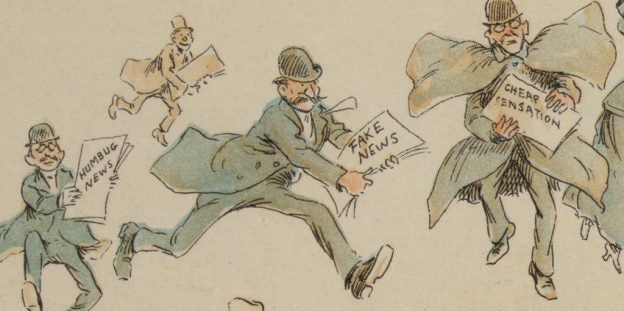Brian E. Weeks: Assistant Professor of Communication Studies and Faculty Associate in the Center for Political Studies
In the wake of the 2016 U.S. presidential election there has been much attention placed on “fake news”—websites and social media posts that often resemble real, credible news but instead create and spread political falsehoods, conspiracy theories, and hoaxes. Yet a more troubling problem than simple dissemination and exposure to misinformation is clearly emerging: people are persistently resistant to the truth. In many instances, individuals know and acknowledge the facts about a particular claim or issue but choose not to believe them. As a result, they are misinformed. But what role do media play in driving this wedge between facts and beliefs?
Although the emphasis on fake news has uncovered an important problem for democracy and contemporary journalism, focusing the public discussion primarily on these made-up websites and stories may be distracting us from other, more typical ways the public becomes misinformed about politics. In particular, ideological or partisan news—those news organizations from the political right and left that explicitly promote partisan viewpoints or whose coverage tends to lean toward conservative or liberal frames—may pose a bigger threat to public awareness of real world events and trends than does fake news. There are a number of reasons we should focus more on the influence of partisan, rather than fake news.
First, while it is too early to tell what impact fake news had on the election, some preliminary evidence indicates that the reach of explicitly fake news may not be as large as one might suspect. The audience for fake news during the election was relatively small—about one-tenth the size of real news—and people spent far more time reading real news compared to fake news. This suggests that fake news may not have been as widespread as some reports implied.
Second, some media critics highlight that the term fake news is now used to describe any disagreeable news or political information. As a result, fake news has already lost its original meaning and continuing to refer to real political lies and deception in this way may serve as more of a distraction from the larger threat of misinformation.
Finally, the significance placed on fake news makes it appear like these sites are the primary culprit for public misperceptions about politics, when in reality real news organizations whose content leans toward one political party or the other may be more likely to influence what people believe.
So do partisan media outlets encourage political misperceptions? If so, how? These are two questions that my colleagues—Kelly Garrett and Rachel Neo—and I set out to address in a study that was recently published in the Journal of Computer-Mediated Communication.
To examine this issue, in 2012 we asked a nationally representative sample of about 1,000 adults in the U.S. to report how often they used both liberal and conservative news sites online. We then asked them a series of questions related to four prominent political misperceptions—two of those claims reflected well on Republican positions and two favored Democrats’ political views. We first assessed whether respondents could accurately report what relevant experts had concluded about each of these false claims. For example, we asked people whether most journalists who reviewed the evidence believed President Obama was born in the US or not, whether journalists’ views on the issue were evenly divided, or if they were unsure about journalists’ position. We next asked participants what they personally believed, which allowed us to compare people’s knowledge of the evidence and facts to the accuracy of their own beliefs.
It is clear from our study that using online partisan news contributes to misperceptions that are in-line with the ideological position of the news outlet. The more people used liberal news online, the more inaccurate were their personal beliefs about the false claims that favored the Democrats. The same pattern was found for use of conservative sites and acceptance of Republican-favored misinformation.
Having established a link between partisan news use and misperceptions, the more important question is how these sites encourage inaccurate political beliefs.
One possible way we considered is that partisan outlets hide evidence from the audience. The assumption here is that if partisan media do not report what experts have concluded about unfavorable claims, the audience is likely to be misinformed because they are unaware of the truth. But we find no support for this explanation. In fact, using partisan media sometimes did the opposite—it increased people’s awareness of experts’ conclusions, even if they were politically inconvenient.
It may also be that partisan media contribute to false beliefs by promoting misunderstandings of the evidence. For instance, coverage of scientific consensus about climate change varies depending on the partisan slant of the outlet. If this were the case, heavy users of ideological news would be less accurate in reporting what the experts think.
We found some support for this explanation—heavy users of liberal news exhibited some misunderstandings of experts’ positions on liberal-favored misperceptions but users of conservative news were no less accurate in knowing what experts believe about the claims that portrayed Democrats in a negative light.
There was one final explanation we tested. Might partisan media encourage people to be misinformed, despite knowing the evidence? Partisan media often question the credibility of experts when their conclusions challenge the ideology of the news outlet. This may plant a seed of doubt in the audience about the legitimacy of the evidence such that people know the facts surrounding a particular claim but they choose not to personally believe them.
We found strong and consistent evidence for this—use of partisan news online promotes outlet-favored misperceptions even if people know those beliefs are at odds with experts’ claims and existing evidence. This was true for users of both liberal and conservative news.
Our results are troubling because they highlight one of the difficulties of misperceptions. It is easy to assume that people would be accurately informed if only they were exposed to the facts. But it is clear that misperceptions are not simply a deficit of knowledge about the facts. Instead, use of partisan news may override the influence of facts and evidence in determining what people believe.
While fake news has received much scorn for its role in promoting misperceptions, our research reminds us that we should not forget that real news outlets—albeit those with a partisan bent—can also lead the public astray.
This is not to say that the attention placed on fake new is unjustified. Surely fake news left some individuals misinformed. And the more people who are aware of and dismayed by political misinformation, the better. But by focusing primarily on fake news we may be placing our spotlight in the wrong place and missing the substantial influence that partisan media have on people’s political beliefs.


